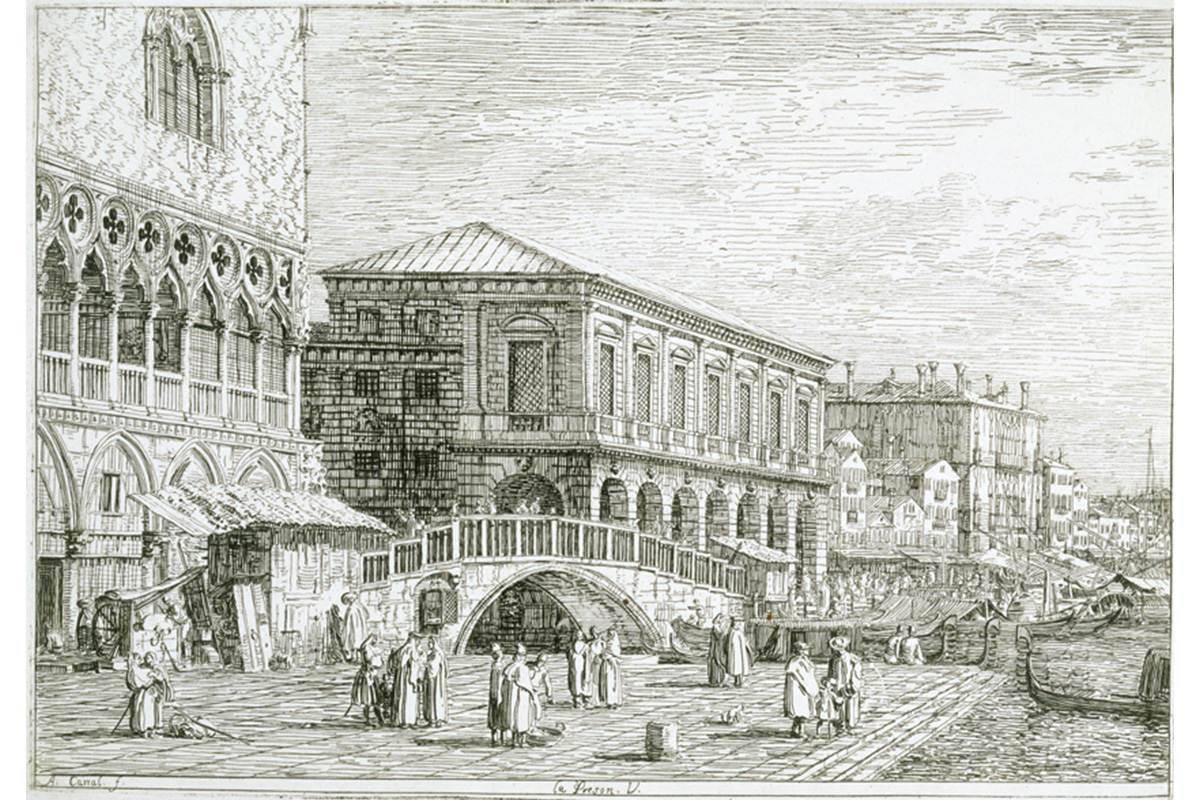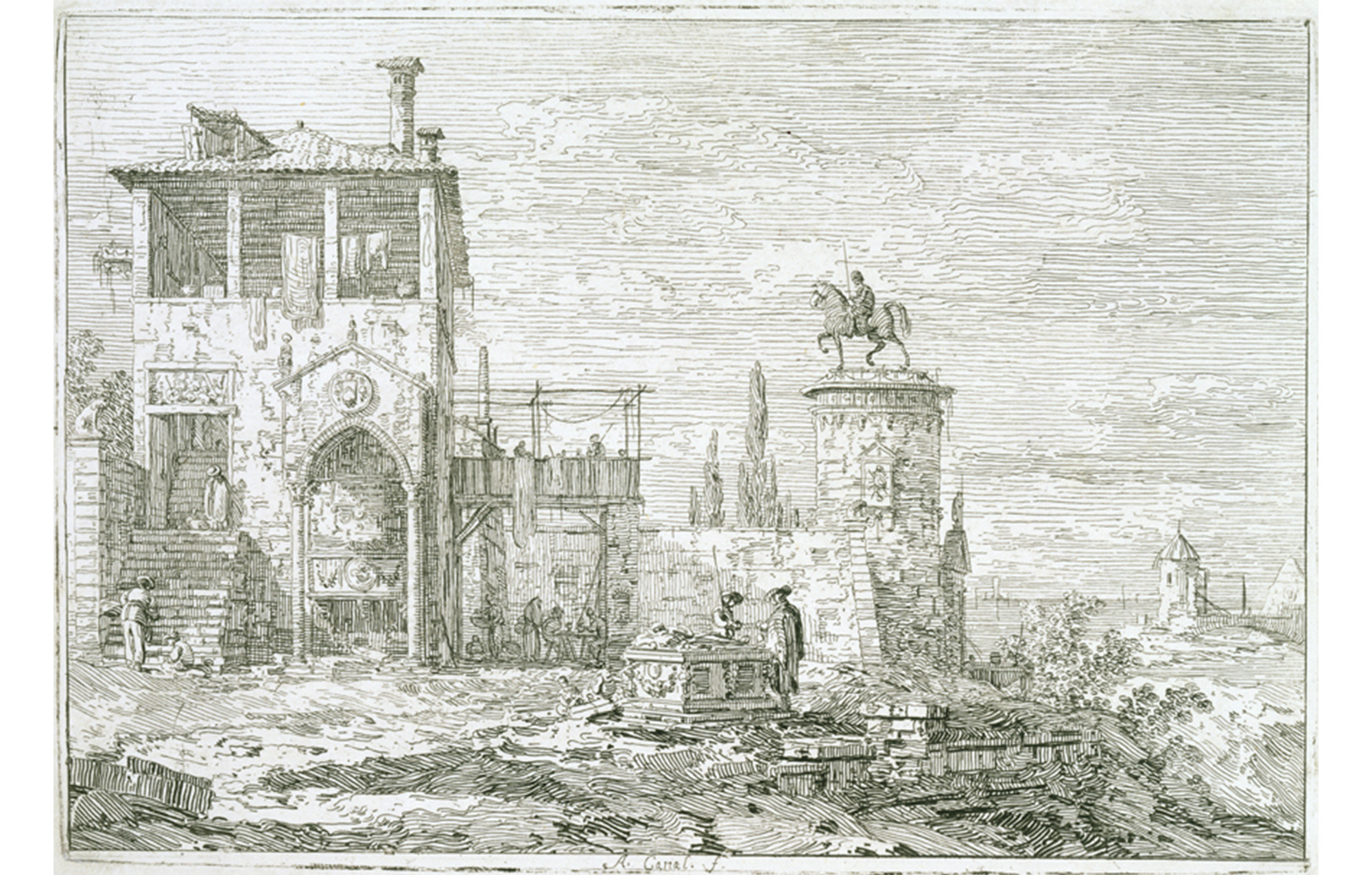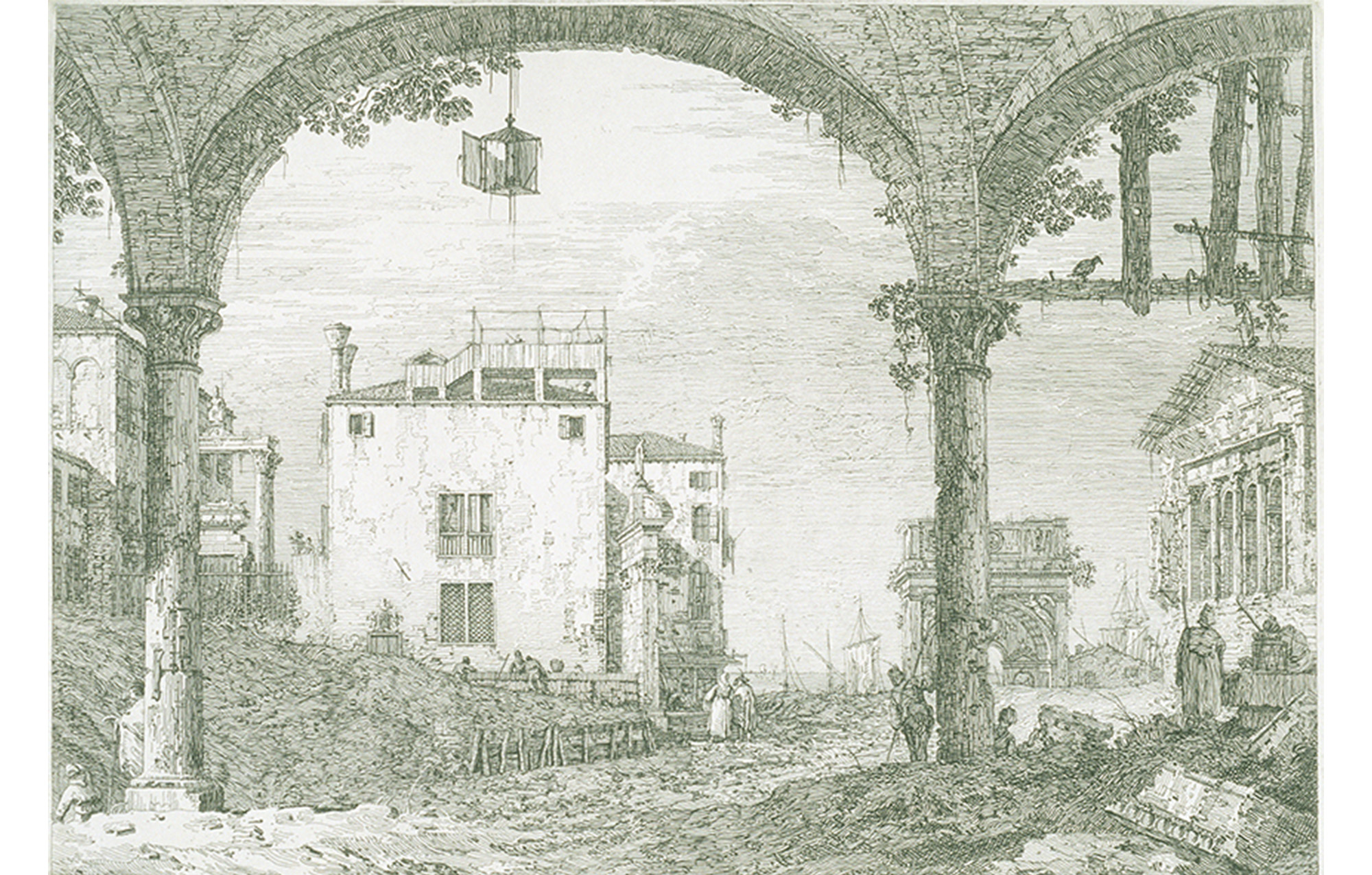
The Grand Tour
Guest blogger Maggie Hoot is a Smith College student, class of 2016, with a major in Art History. She was a Student Assistant in the Cunningham Center for the Study of Prints, Drawings, and Photographs.
At its height in the 18th-century, the European Grand Tour was considered a way for young British gentlemen to gain cultivation and refinement with the least amount of embarrassment to their families. Even though there was not an official itinerary, these travelers focused on major cities such as Paris and Rome and almost always concluded their tours in Italy. While Paris was renowned for its modern culture and high society, Italy was largely seen as regressive despite attempts to modernize and conform to the ideals of the Enlightenment; Italy was visited primarily for its acclaimed art and antiquities. Venice was one of the few cities in Italy that was up to British standards. It still retained some of the vitality associated with a commercial hub, though the economy had shifted primarily to tourism. These features made Venice a popular choice to finish the Grand Tour.
As Grand Tour travelers drove the Italian economy, they also influenced local art production. It was common for travelers to keep some kind of written log of their travels; however, the visual representation of their destinations was limited to what artists could create with brush or pen. In response, many Italian artists began producing works for commercial purchase. One such artist was Giovanni Antonio Canal, commonly known as Canaletto. Canaletto created contemporary land- and cityscapes, or vedute, which appealed to the travelers’ desire for reminders of their travels—the picture postcard of their day. Canaletto was and remains one of the most famous painters of vedute.

Canaletto. Italian, 1697–1768. Landscape with Equestrian Statue, n.d. Etching printed in black on paper. Purchased. Photography by Petegorsky/Gipe. SC 1952.75.
Canaletto was born and raised in Venice and began his artistic career there in 1719. Initially, he followed in his father’s footsteps as a theater scene painter, where he developed a detailed and deft hand that later became widely recognized as his signature style. In his vedute, Canaletto created extremely detailed, almost photographic depictions of scenes of Venice, the surrounding country, and even some imagined landscapes. Canaletto recreated the local architecture meticulously and included the whole range of Venetian life, beggars and lords, children and animals. He devoted most of his time to painting, but also produced many equally impressive and more affordable etchings. Even in his smallest etchings, Lilliputian figures are crafted with just as much detail as in his larger paintings.

Canaletto. Italian, 1697–1768. Mestre, n.d. Etching printed in black on paper. Purchased. Photography by Petegorsky/Gipe. SC 1959.31.
Just as the prevalence of the Grand Tour influenced Canaletto’s art, likewise, his art shaped British views toward Italy. In the second half of the eighteenth century, Canaletto’s works were so numerous and widespread that the British built strong pre-, and often mis- conceptions of Venice based on his works before they ever arrived at its canals. His work was so popular in England that other artists began creating works that imitated Canaletto’s style and often erroneously carried his name. Today, even though Canaletto produced an extensive number of works over nearly 50 years, there are more "Canalettos" than can be claimed by a single man.

Canaletto. Italian, 1697–1768. Porch with Lantern, ca. 1741. Etching printed in black on white laid paper. Gift of Mrs. E. Byrne Hackett (Isabel La Monte, class of 1913). Photography by Petegorsky/Gipe. SC 1979.26.1.